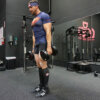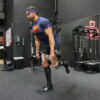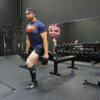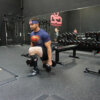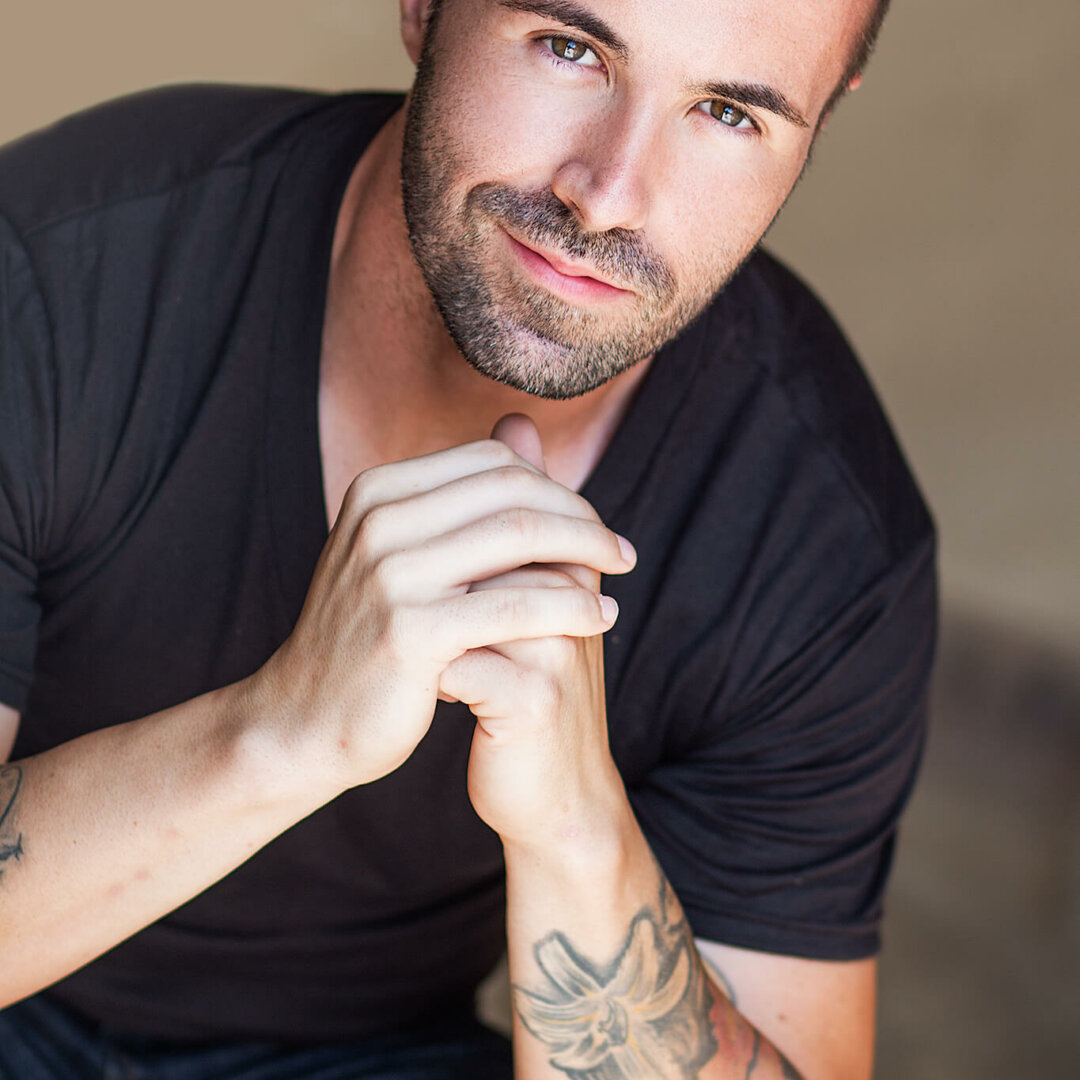If you drive a car, play baseball, play a musical instrument other than the piano, or just about any other non gym activity, you’re going to be imbalanced. All these activities involve the use of a dominant side of your body. At the same time, these activities that use both sides use them differently. So you end up with different ranges of motion and muscular development over the course of time.
That’s not too big of a problem, however. There’s one secret that you can do in your training to help mitigate these imbalances and any potential issue they might cause. That secret isn’t really a secret. It’s just something that’s often underused to its full potential. It’s unilateral training. And since most of don’t plan on getting in a car made in a different hemisphere and driving the opposite way we learned for an equal amount of time, unilateral training is a great way to fix yourself. Not only that, it can help you both pre and post injury. And, unilateral training can be a nice way to increase your work capacity by adding more volume into your workouts.
Injury
When you get injured a lot of things happen. One of those things is this overwhelming sense of dread that everything you worked for in training is useless now.
In other instances, injury can wreck your identity. If you’re a powerlifter and you injure your left hip, suddenly squatting and deadlifting become monumental tasks, if not impossible for a short while. So, you have an identity crisis because you can’t powerlift.
The worst thing to do would be to not train because of this. Especially since a single torn quad, hamstring, bicep, is a unilateral injury. That being the case, if one limb is out of commission, you have three others you can train. And you’d be crazy not to.
So training your “good side” affords benefits to the untrained side. Inactivity of the leg muscles reduces the strength by about a third [1]. But the benefits of contralateral training aren’t necessarily new. In 1894, Miss Emily Brown squeezed a rubber bulb ten times with her left hand and it was connected to a device that measured her grip strength. For eight of the next 13 days, she squeezed the bulb ten times with her right hand. On the thirteenth day she retested her grip strength on the left side and found a 43% increase [2].
Now, it wasn’t perfect, with that whole sample size of one and all that, but it did provide a good starting point for other research over the next century and change. For example, we do know that there is some “spillover” due to contralateral training, and I hypothesize that it’s due to the nervous system being adept at the motor pattern on one side that it carries over just a bit to the other. Kind of like how if you tried to write with your non dominant hand, you could do it, but you won’t be quite as adept. If you practice, specifically, you will of course gain more competence. The overall take away here is that if you can train, you should. And if you’re injured, train the rest of your body.
“Core” Training
To make things simple, when I say “core” I refer to the musculature of the lumbo-pelvic region. So any muscle that makes your spine twist, flex, extend, or translate is your core. Not only that, the muscles that tilt your pelvis anteriorly, laterally, or posteriorly are also your core. The short story is that your core is your center.
We know that core stability is integral to performing squats and deadlifts. If you ever try to squat heavy and your abs aren’t braced, you’ll crumple over in a pile of anguish and defeat. In the context of other sports, core stability is integral to keep you from moving too much. In boxing, a stable spine keeps you from overextending your reach and performing a bad punch. A bad punch, at best, means you miss. At worst, you get knocked off balance, and pummeled and you get knocked out. The tension of the musculature can help you take a punch, as well. In fact, contrary to the movie depiction of his death, Harry Houdini died from a brutal punch to the guts. He didn’t have time to tense before the man punched him. But more to the point, in a sport context, the core is stable and the limbs move.
Of course, we want to mimic that in training. One example of this can be done with the standard bent over row. You have many options for these depending on your goal. The stronger your base of support, the more weight you can move. If brute strength and/or hypertrophy are your goals, doing them with your chest supported on a bench will help you.
To use unilateral training for this purpose, you want to nix the bench. And you want to use one limb at a time. You’ll wind up using less weight due to the lack of support as well as the bilateral deficit, but this time, it’s not a bad thing.
To start, perform a hip hinge while holding one dumbbell. Make sure your torso is no more than 45 degrees in relation to your hips. More is not bad, but you don’t want less. After that, get to rowing. A simple back exercise becomes a back exercise with an anti-rotation component. Try to go at this with either too heavy a weight, or not keeping yourself tight and you will rotate.
Another example for the lower body is a common exercise. I’m talking about mountain climbers, the favorite of Instagram fitspo models everywhere. To perform, assume the plank position with your arms extended, like the end of a push-up. Bring your knee to your chest of your left leg; replace it, repeat with your right leg. Normally, you see people doing this with a rapid pace, terrible form, and tons of social media followers looking on in awe. And that quick pace is fine, if you can keep your upper body stable and locked into place.
For our purposes, you can spruce it up a bit. To get the effect of unilateral core training, you can try the following:
- Performing or one leg at a time, without touching the working leg to the ground
- Using the low cable machine to load the movement thereby loading your hip flexors
- Using an ankle weight
You get the stability benefits or doing a plank, and the benefits of doing unilateral work, as well as working out the oft neglected hip flexors. If you want an even harder challenge, lift a hand off the ground. If you’re working the left leg, free the right hand. Thank me later.
Increasing Volume and Balancing Yourself
If you want strength AND size, you need specific practice for both. You have to practice the higher intensity of the big lifts to get stronger, and for the size, you need volume. You could go the route of doing the same big lifts at lower weights, or you could reap the benefits of unilateral training for additional volume. Not only that, if you notice your dominant limbs taking a bit more of the work on their own in the big bilateral lifts, this is a fantastic opportunity to fix that, too.
As an example, if your legs have a discrepancy in their movement—be it strength, mobility, size, or range of motion—you can knock out your squats and deadlifts, then move onto some unilateral work via one legged deadlifts, Bulgarian split squats, one legged leg presses, etc. However, if such a discrepancy does exist, your unilateral training might not be symmetrical. That means that if you can go deep in a Bulgarian split squat on your right side, but not your left, you’ll be training within your limits on your left, using the range of motion you can. Alternatively, if your left leg is weaker than your right leg, you might use a heavier load. If the muscle is smaller and you want the size to equal out, you’d do more volume on your left.
In the context of sports, if you play an asymmetrical sport, like roller derby or running track, you can even out the unused muscles on either side. So in these instances, you might perform more unilateral hip abduction movements on the left and more hip adduction movements on the right. It doesn’t have to always look the same.
Conclusion
There you have it. If you’re not doing much unilateral work in your programming, it’s not difficult to add it in for extra volume. More than that, it’s a great way to keep your motor patterns if you’re injured as well as balance out any glaring asymmetries you may have. If you find your current program lacking enough unilateral work, it’s easy enough to add it on. For instance, you can add on the modified mountain climbers for your ab work. On days you train legs, you can add on the unilateral leg presses, or Bulgarian split squats, and on upper body days you can use the modified rows. The choice is yours, but don’t cheat yourself and not work out each limb individually.
References
- University of Copenhagen The Faculty of Health and Medical Sciences. (2015, June 26). Inactivity reduces people’s muscle strength. ScienceDaily. Retrieved June 5, 2017 from www.sciencedaily.com/releases/2015/06/150626095520.htm
- Carroll, T. J., Herbert, R. D., Munn, J., Lee, M., & Gandevia, S. C. (2006). Contralateral effects of unilateral strength training: evidence and possible mechanisms. Journal of Applied Physiology,101(5), 1514-1522.
- Botton, CE, Radaelli, R, Wilhelm, EN, Rech, A, Brown, LE, and Pinto, RS. Neuromuscular adaptations to unilateral vs. bilateral strength training in women. J Strength Cond Res 30(7): 1924-1932, 2016
- Pearce, A., & Kidgell, D. (2010). Reduction of the bilateral deficit following unilateral strength training: A TMS study. Journal of Science and Medicine in Sport,13. http://dx.doi.org/10.1016/j.jsams.2010.10.648

